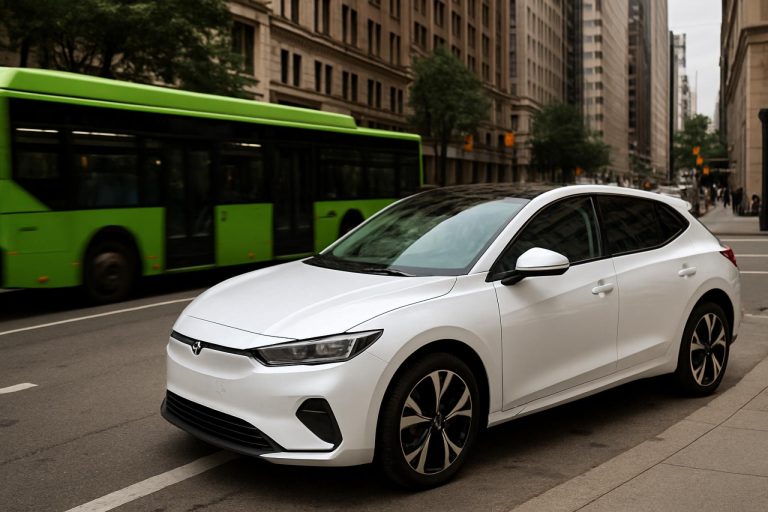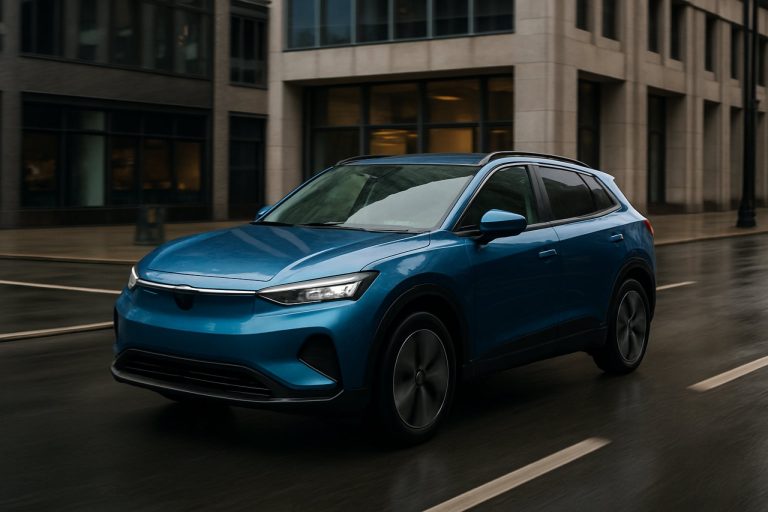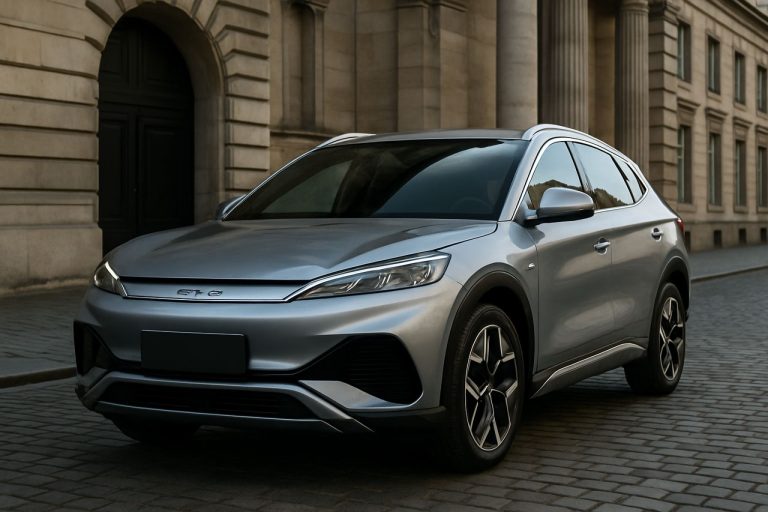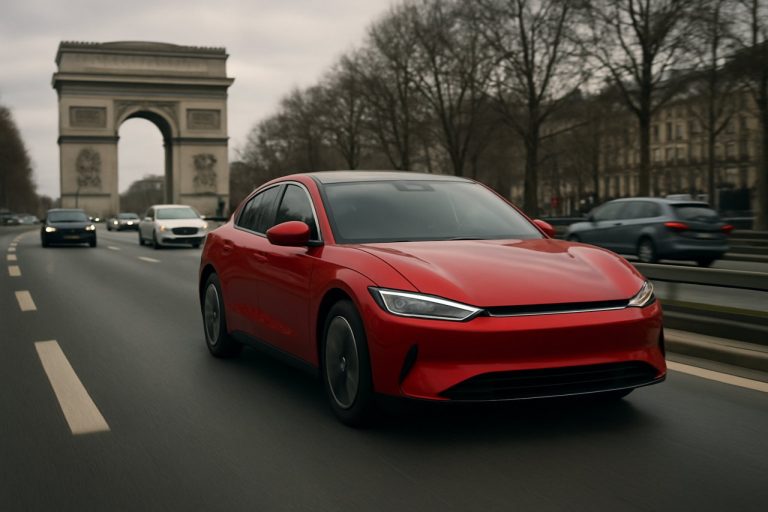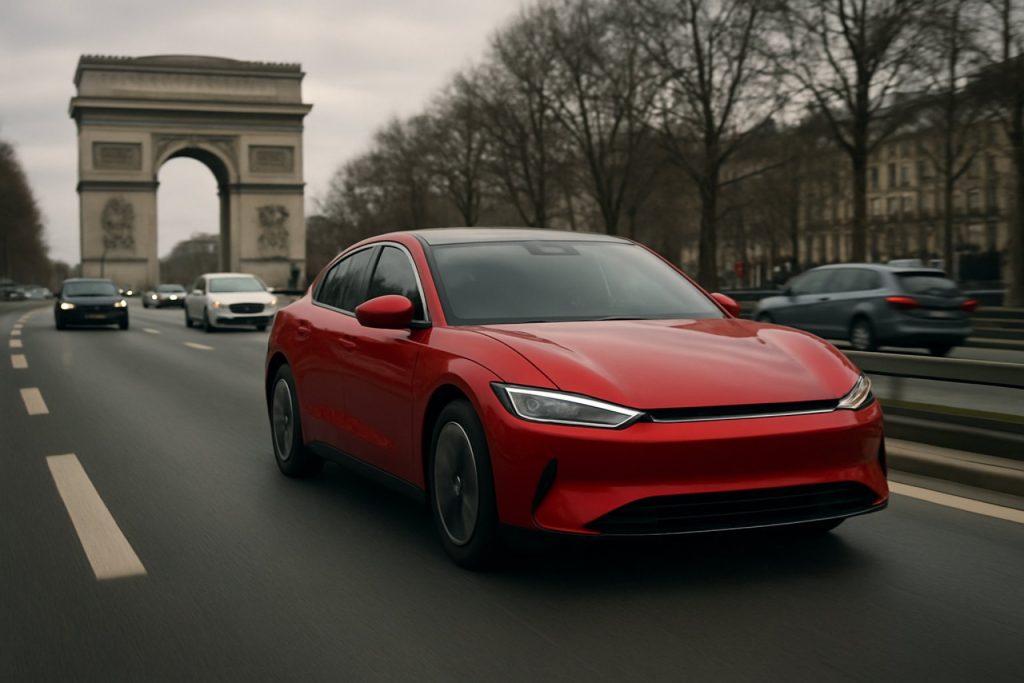
- BYD, a Chinese electric vehicle (EV) brand, recently surpassed Tesla in monthly EU battery-electric car registrations, highlighting a major shift in the European EV market.
- Chinese automakers, led by BYD, are rapidly expanding in Europe, growing nearly 60% year-over-year—twice the overall market rate.
- BYD’s growth strategy includes local assembly in Hungary, alliances with supportive governments, aggressive pricing, and leveraging China’s subsidies and battery supply chain.
- Europe is imposing steep tariffs (up to 35%) on Chinese-made EVs to counter concerns over state subsidies and potential market flooding.
- Many of BYD’s current EU sales stem from large fleet and rental deals, which may be threatened as tariffs and political pressure increase.
- The rapid rise of Chinese EVs in Europe faces future uncertainty due to evolving competition, geopolitical tension, and shifting policies.
Smoke once billowed from the storied factories of Germany, Italy, and France, as European automakers set the gold standard for mobility. Now, a new presence glides down city streets and countrysides—a fleet of sleek, affordable electric vehicles branded with bold characters: 比亚迪, or BYD. This spring, BYD toppled Tesla from its long-held throne, registering over 7,200 battery-electric cars in the European Union in April—outpacing the Silicon Valley giant by a slim but seismic margin.
This moment pulses with meaning far beyond the sales charts. European roads have become the arena for global industrial transformation, where China’s manufacturing power squares off against Western brands and their political legacies. The latest data, sourced from leading auto analytics, reveals not just a fierce head-to-head, but a tectonic shift. Chinese auto brands, led by BYD, grew nearly 60% year-over-year in Europe last month—double the overall market’s pace, and more than any Western rival.
How did BYD surge so swiftly into the citadels of Old World automotive might? Not merely through one best-seller, but a tapestry of strategy: local assembly plants in Hungary, shrewd alliances with Eastern European governments hungry for jobs and investment, and a relentless drive to undercut rivals on cost. Subsidies from Beijing help BYD slash prices without blinking at profit margins, while its global battery supply chains deftly sidestep many Western regulations and environmental costs—delivering the “green” promise to European buyers, while China shoulders the hidden burdens of pollution and recycling.
Once known as a brash upstart, Tesla now finds its reputation in retreat. European consumers—especially those wary of controversial political stances from Tesla’s founder—have loosened their loyalty. Meanwhile, policy winds have shifted: American incentives tilt back toward gas-powered cars, even as the EU doubles down on ambitious climate goals. The transatlantic rift deepens; the pace of electrification diverges.
Yet the pendulum swings both ways. BYD’s breakneck rise has triggered alarms across European ministries. This fall, the European Commission will slap steep tariffs—upwards of 35%—on Chinese-made EVs, an effort to dilute the impact of what officials describe as unfair state support and overproduction. With over three million EVs rolling off Chinese assembly lines annually, analysts warn Europe’s openness could make it a dumping ground for excess supply excluded by U.S. and Canadian import barriers.
Negotiations simmer, as Eurocrats and Chinese envoys haggle over possible minimum prices for imported EVs. The region’s political map fractures—economic revival is welcomed in Hungary and Serbia, but fiercely resisted in Berlin, Paris, and Rome, where labor unions and industry giants see existential risks.
Sources confirm much of BYD’s current headline sales in Europe comes not from private buyers, but from large deals with rental and fleet operators. This channel, while helping swell early numbers, may prove fragile as tariffs bite and political scrutiny intensifies. To stay ahead, BYD is racing to outflank tariffs by assembling vehicles in new plants from Hungary to Brazil to Turkey, aiming for 800,000 overseas sales by next year.
The heart of the story throbs with uncertainty: Is BYD’s triumph the dawn of a new order, or a dazzling but passing phase? Wise voices urge caution. Rivals like Ford, Skoda, and China’s own XPeng are also posting record growth; one month’s data, though striking, rarely shapes destiny in an industry this volatile.
Brand, technology, supply chains, geopolitics, and consumer sentiment are locked in an evolving contest. As nationalist rhetoric ramps up across Europe and the United States, the path ahead will likely be anything but smooth for BYD and its peers.
The key message is clear: China’s electric cars are no longer knocking at the door—they’re parked on Europe’s main street. But in this global game, victory is never final, and the rules may change overnight. The coming years will determine if this surge is an irreversible wave, or the crest before a new cycle of rivalry and reinvention. For those tracking the future of mobility and industry, Europe’s roads remain the world’s most vivid front line.
For the latest on global industry, visit Reuters and for in-depth technology analysis, see Financial Times.
Shocking BYD Breakout: How China’s Electric Car Surge Is Turbocharging Europe (and What It Means for You)
# BYD’s Electric Revolution: The Real Story Behind China’s EV Invasion of Europe
China’s BYD has made global headlines by outselling Tesla in Europe for the first time—a move that signals far more than just a flip in monthly sales. If you’re tracking the future of affordable cars, clean energy, or global industry, what’s happening on Europe’s roads is a game-changer. Let’s unpack the strategies, consequences, and burning questions everyone’s asking, backed by the latest data and expert analysis.
—
BYD vs. Tesla: The Numbers, The Strategy, The Shift
– Outselling Tesla: In April 2024, BYD registered 7,200+ battery electric vehicles (BEVs) in the European Union, narrowly outpacing Tesla (Source: Auto analytics cited by Reuters).
– Explosive Growth: Chinese carmakers’ sales soared nearly 60% year-over-year in Europe, dwarfing the overall EV market’s growth, and vastly outpacing European and U.S. rivals.
– Market Share Shift: Chinese brands now account for an estimated 9%+ of new EV registrations in the EU, up from just 2% two years ago (European Automobile Manufacturers Association – ACEA).
—
How BYD Did It: Hidden Advantages & Market Hacks
1. Strategic Local Assembly: Plants in Hungary (soon in Turkey, Brazil) bypass new European tariffs and employ locals, winning over governments in Eastern Europe.
2. Aggressive Pricing: Thanks to subsidies from Beijing, BYD undercuts competition by up to 20–30% on comparable models—making EVs accessible to price-sensitive buyers.
3. Fleet Sales Focus: Major deals with European rental/fleet operators (including SIXT and Arval) have fueled “headline” sales—but many private buyers remain cautious.
4. Vertical Integration: BYD manufactures its own batteries—often the single largest cost in an EV—giving it a cost and supply edge over rivals who rely on third-party suppliers.
—
BYD’s Best-Selling Models in Europe: Features, Specs & Pricing
– BYD Atto 3: Compact crossover; 420–480km WLTP range; ~€38,000; advanced safety suite, competitive warranty.
– BYD Dolphin: Budget-friendly hatchback; 340–420km range; starts near €30,000.
– BYD Seal: Mid-size sedan directly rivaling Tesla Model 3; up to 570km range; starting ~€44,000.
– All models feature cutting-edge Blade battery technology, praised for its safety and longevity (source: Bloomberg).
—
Industry Trends: What’s Driving Europe’s EV Transformation?
– Government Mandates: EU targets for phasing out internal combustion engines (ICE) by 2035 have forced rapid adoption.
– Home-Built vs. Imported: European auto giants (VW, Stellantis) scramble to launch affordable EVs—but Chinese imports remain 10–15% cheaper on average.
– Tariffs & Trade Barriers: EU to impose up to 35% tariffs on Chinese EVs from autumn 2024; U.S. and Canada have raised tariffs even higher, effectively blocking most Chinese imports.
– Political Fractures: Eastern Europe welcomes new jobs; France, Germany, and Italy eye industry threats and labor unrest.
—
Controversies, Limitations & Security Concerns
– Subsidies & Fair Play: EU accuses China of unfair state support and “overproduction,” potentially destabilizing local industry (source: European Commission).
– Environmental Paradox: While BYD’s BEVs emit zero tailpipe CO2, much of their battery production relies on Chinese coal power and raises recycling/waste questions.
– Supply Chain Risks: Heavy dependence on Chinese lithium, cobalt, and rare earths poses geopolitical and ESG (Environmental, Social, Governance) vulnerabilities.
—
Real-World Use Cases & Ownership Insights
– Affordability for Urban Families: Low up-front costs make BYD vehicles especially popular among young city drivers seeking to enter the EV market.
– Fleet Efficiency: Rental firms praise BYD for solid range, low maintenance, and rapid charging, but some report limited dealer/service coverage.
– Resale Value: Early data suggests lower residual values than top-tier European brands, reflecting ongoing consumer skepticism.
—
How-To: Shopping for a Chinese EV in Europe
1. Compare Models: BYD vs. MG, NIO, XPeng, Tesla—assess range, price, features, and warranty.
2. Test Drive: Experience direct, quiet acceleration and digital cockpit tech.
3. Check Local Incentives: Some EU countries offer grants or tax breaks for EV adoption.
4. Evaluate Service Networks: Ensure maintenance centers are available near you.
5. Anticipate Policy Changes: Tariffs and local regulations could impact prices or import availability—ask dealers for updates.
—
Pros & Cons Overview (BYD in Europe)
Pros:
– Competitive pricing (often lowest in segment)
– Good range and battery longevity (Blade tech)
– Rapid expansion of service and sales points
– Eligible for many national EV incentives
Cons:
– Uncertain resale values (brand still gaining recognition)
– Service networks not as comprehensive as traditional brands
– Pending tariffs could affect future pricing and support
– Some environmental concerns over supply chain sustainability
—
Market Predictions & What’s Next
– BYD’s Target: 800,000 overseas sales in 2025—much driven by local assembly and new markets (Turkey, Brazil, Southeast Asia).
– European Response: Volkswagen, Renault, Stellantis planning budget EV launches under €25,000; aiming for “strategic autonomy” in batteries and chips.
– Tariff Impact: Analysts (JATO Dynamics, Bernstein) warn that hefty tariffs may slow but won’t stop Chinese EVs—expect more “European-assembled” Chinese cars.
– Future Wildcards: Consumer perceptions, sudden policy pivots, and continued tech breakthroughs will shape the race.
—
Actionable Recommendations & Quick Tips
– If you’re considering an EV, now is an ideal time to compare BYD and other Chinese models while prices remain low and incentives generous.
– Watch for announcements from the EU on new tariffs—final pricing may change rapidly through late 2024.
– For fleets and businesses, negotiating bulk deals with BYD now could yield significant short-term savings before tariffs bite.
– Stay informed with trusted industry news: visit Reuters for the latest automotive updates and Financial Times for in-depth business analysis.
—
Bottom Line:
China’s BYD is not just disrupting but redefining Europe’s electric car landscape—with a mix of price, technology, and state support few can match. As political, environmental, and consumer forces collide, the European EV market will remain the world’s most exciting (and unpredictable) proving ground for years to come.
